Linens will last for years with gentle care. Proper cleaning and storage will prolong their life and ensure they retain their heirloom quality. D. Porthault linens exist to be enjoyed, and you should always feel comfortable using and caring for them. Like fine silver or pearls, the more you use your linens the more luminous and precious they will become.
Bed Linens And Terry
All D. Porthault bedding is woven of 100% Egyptian cotton or Belgian linen on extra-wide
looms and cut generously. Some shrinkage of the natural fibers is normal, but that has been
taken into consideration in production, and you will always have abundant fabric. D. Porthault terry towels are woven of 100% Egyptian cotton and, in many ways, should be
cared for just as you care for your sheets. However, it is recommended that you wash your terry separately from your bed linens to avoid pilling.
Storing Fine Linens
One of the most wonderful aspects of home linens is the beauty of their storage. The feel and look of gently folded fabrics, and the clean, crisp fragrance of laundered linens is intoxicating. The important thing to remember is that these natural fibers need to breathe. It is recommended that linens be stored in a cool, dry and well-ventilated space, shielded from long exposure to direct light. If possible, you should fold your linens flat on wooden shelves covered with paper. And, following French tradition, it is pleasing to tuck lavender sachets within your wardrobe linens.
For more detailed fabric care instructions including washing, ironing, and stain care, please visit the D. Porthault website at www.dporthaultparis.com/fabric-care.
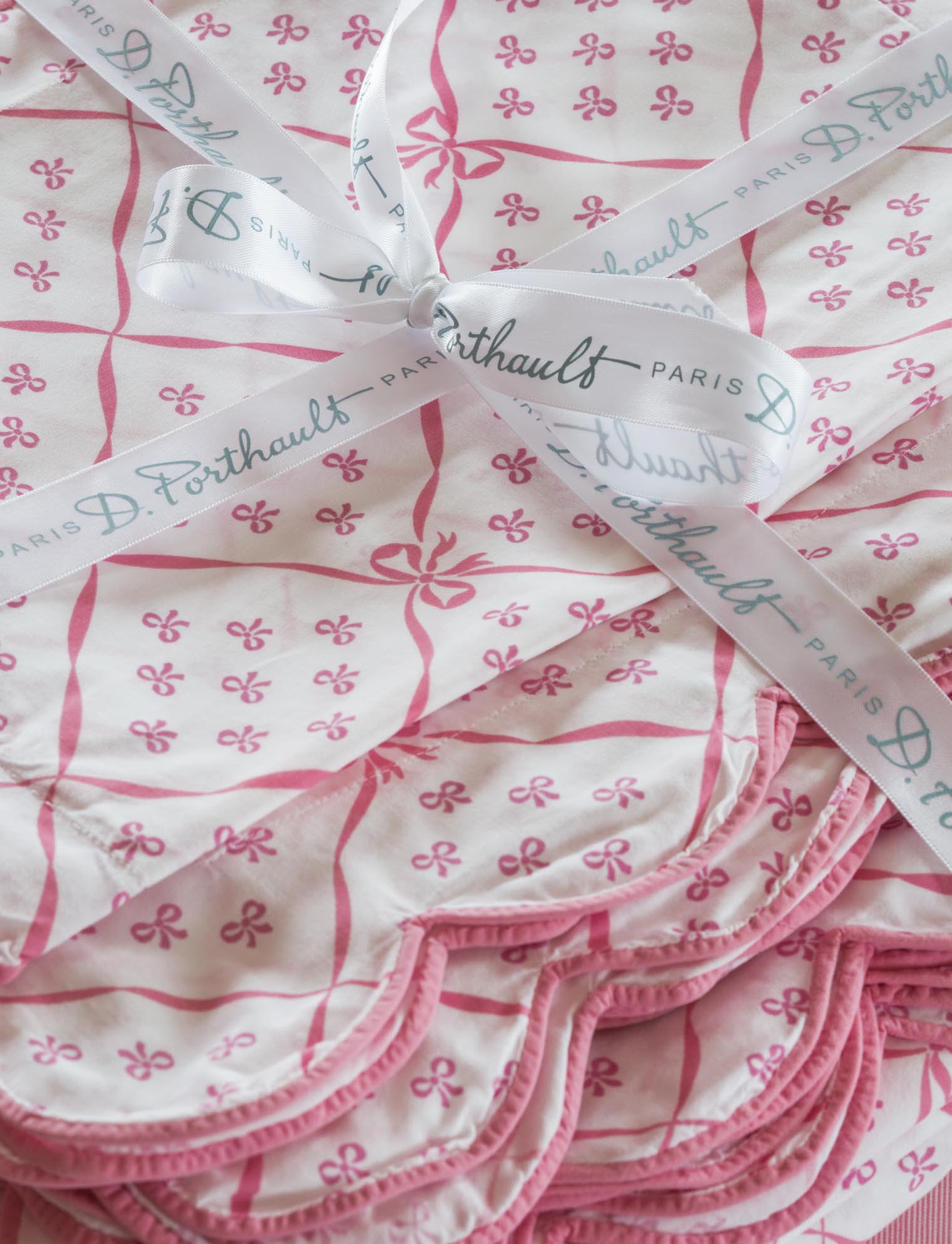
D. Porthault Production
The production process begins with a design inspiration. Drawing from nature, the visual arts, fashion or their imagination, D. Porthault designers sketch, color and create paper patterns scaled to accommodate the product they envision. In creating motifs for bedding, towels, table linens or accessories, pattern color, size, placement and repeat are considered. Finished designs are then either hand embroidered or engraved onto screens for printing.
D. Porthault’s design studio is in Paris; its weaving, cutting, sewing and finishing factory is in Cambrai, northern France; and its printing workshop is in Argentan, Normandy.
Many of D. Porthault’s Cambrai and Argentan employees are the children and grandchildren of men and women who have worked at Porthault for decades. The skills in both workshops are overseen by contredames and contremaîtres, with an honored legacy of internal training and apprenticeship.
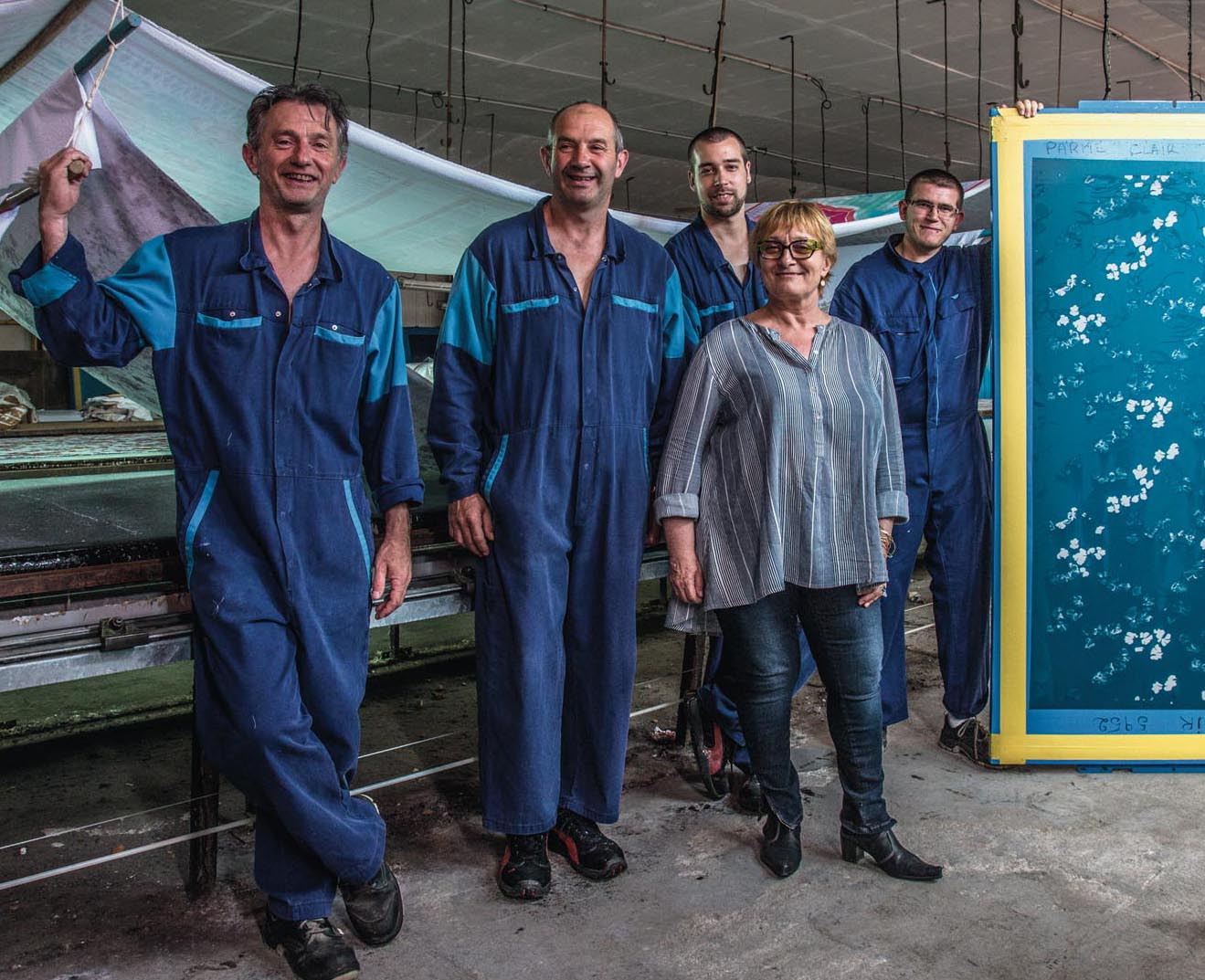
Porthault’s team at the factory in Cambrai, northern France. Joan Carl is shown with the craftsmen and women who weave, cut, sew, embellish, wash, iron, fold and pack the company’s linens.
Long staple Egyptian cotton, widely considered to be the best in the world, is used to weave D. Porthault’s 100% cotton fabrics, including terry, percale, voile, sateen, damask and cretonne.
Paint colors are manually mixed by the method that has been used for generations. With a recipe book and hand-written notes, Porthault’s master colorist combines pigments to create the perfect shade. Whether producing a new coloration or matching a decades-old printing, the artisan works to capture the colors with accuracy, clarity and continuity.
D. Porthault’s current printing process has changed little since the 1930s. The company’s first printing was done with wooden blocks hand carved by craftsman in Paris. Later, Porthault designed screens—with a separate hand-engraved screen for each color within a print—and commissioned wide printing tables. This allowed Porthault to increase the width of its printed fabrics, the scale of its design repeats and the volume of its production. In the late 1940s, Porthault developed engraved screens and tables for the printing of terry towels as well.
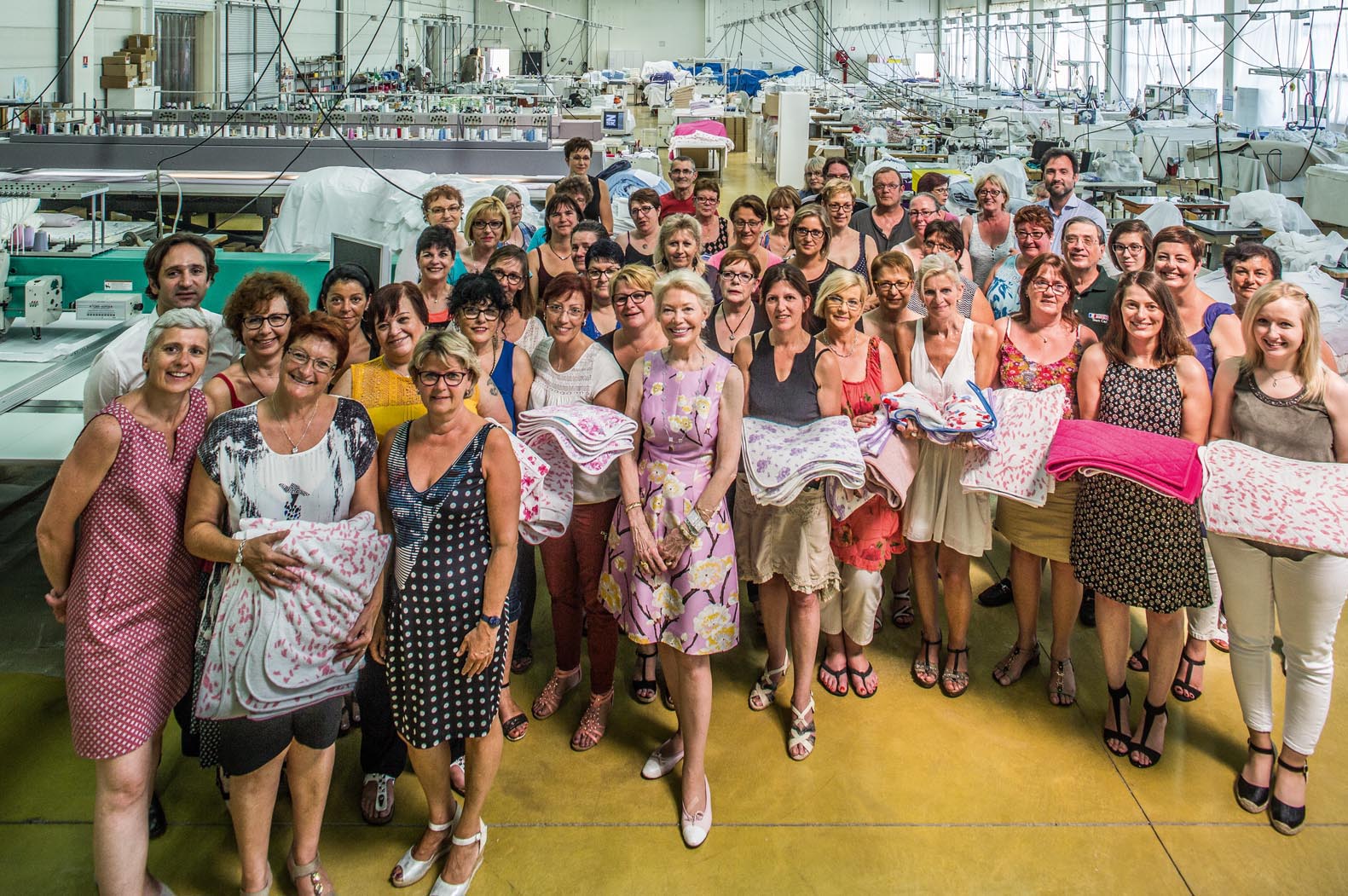
Porthault’s team at the printing factory in Argentan, Normandy.
The fabric—whether cotton, linen or terry—is secured on the printing table and an engraved screen is placed over it. The hand-mixed paint is then poured into a trough parallel to the table, one color at a time. A heavy roller captures this paint and literally “squeezes” it across and through the screen and onto the fabric below. After each color is applied, the printing screen is cleaned and the next screen and color is applied. This is an artisanal, labor-intensive process rarely used today, but it allows for the full saturation and stabilization of color into the fabric and creates prints that last a lifetime.
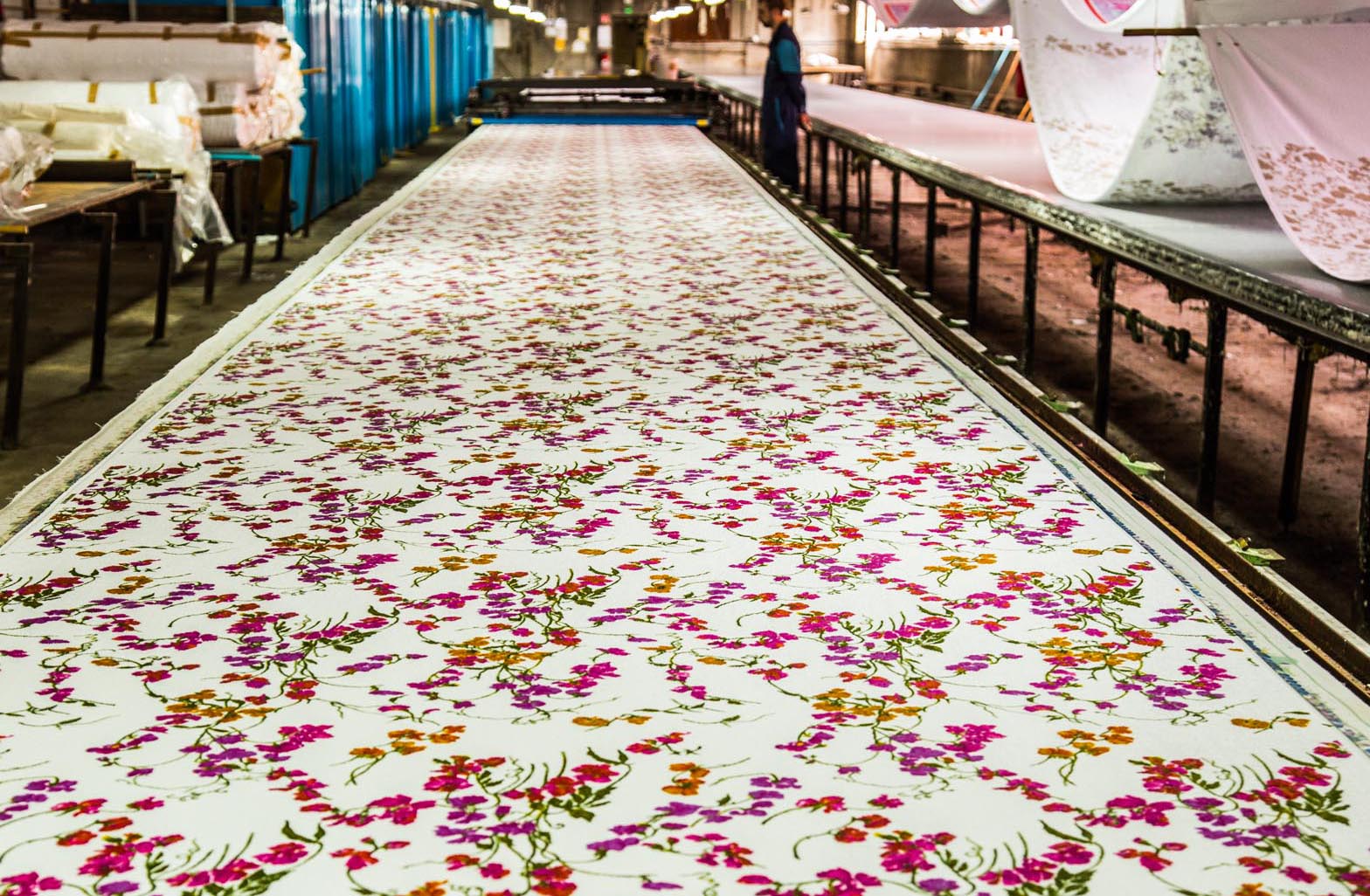
Facing, top: Printing Pois de Senteur cotton percale; with previous printings hanging to dry.
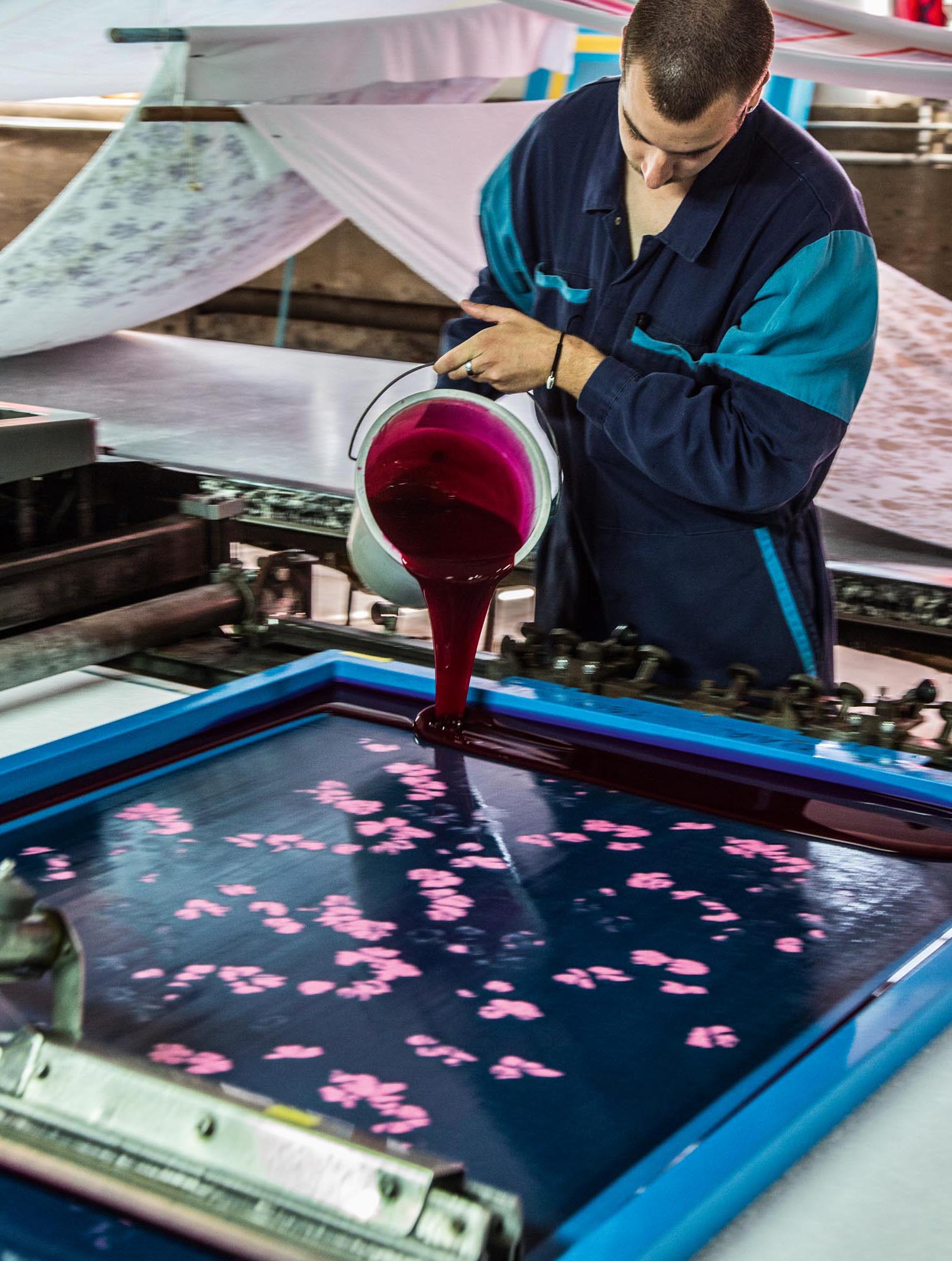
Facing, Bottom left: Pouring paint into troughs on the printing tables, one color at a time.
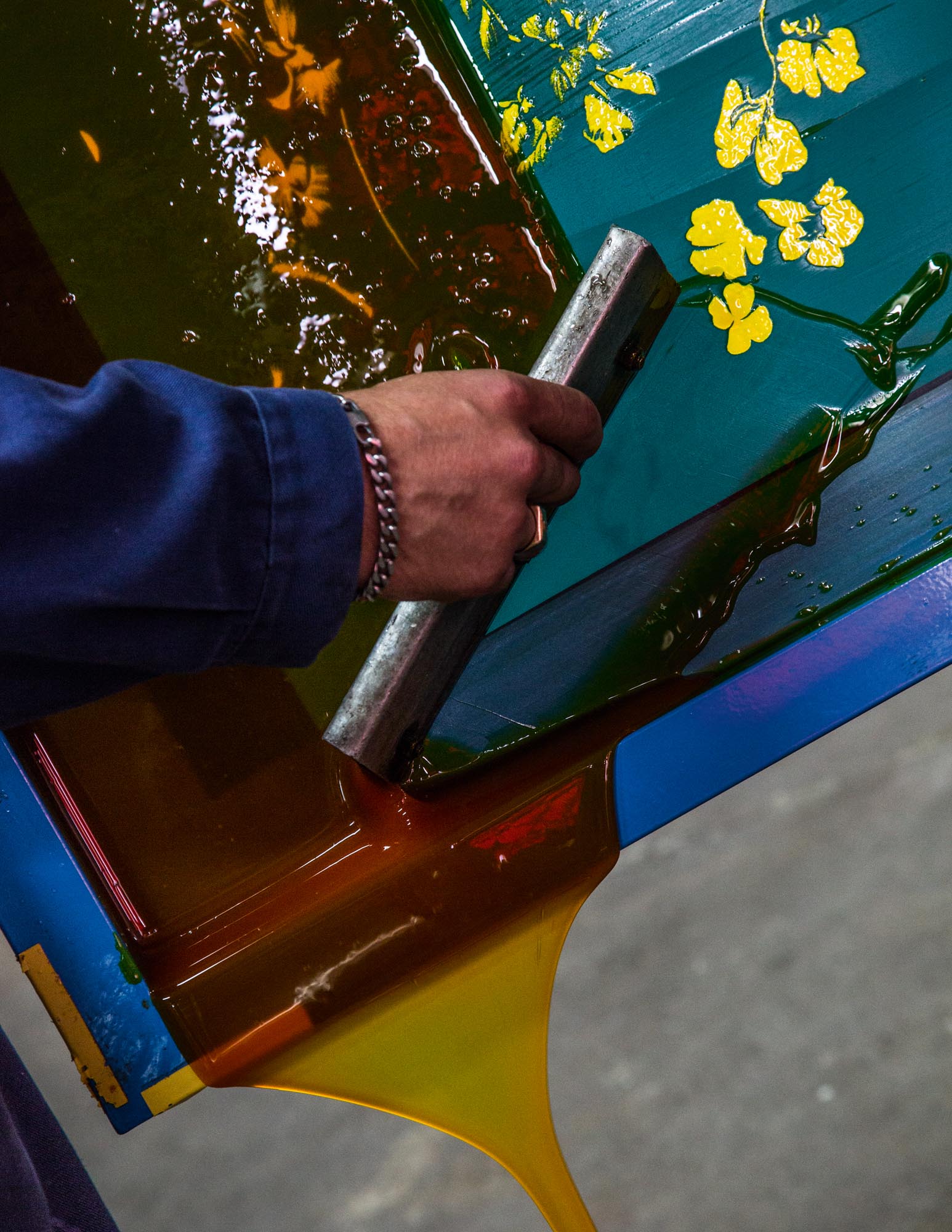
Squeezing paints onto the fabric through engraved screens.
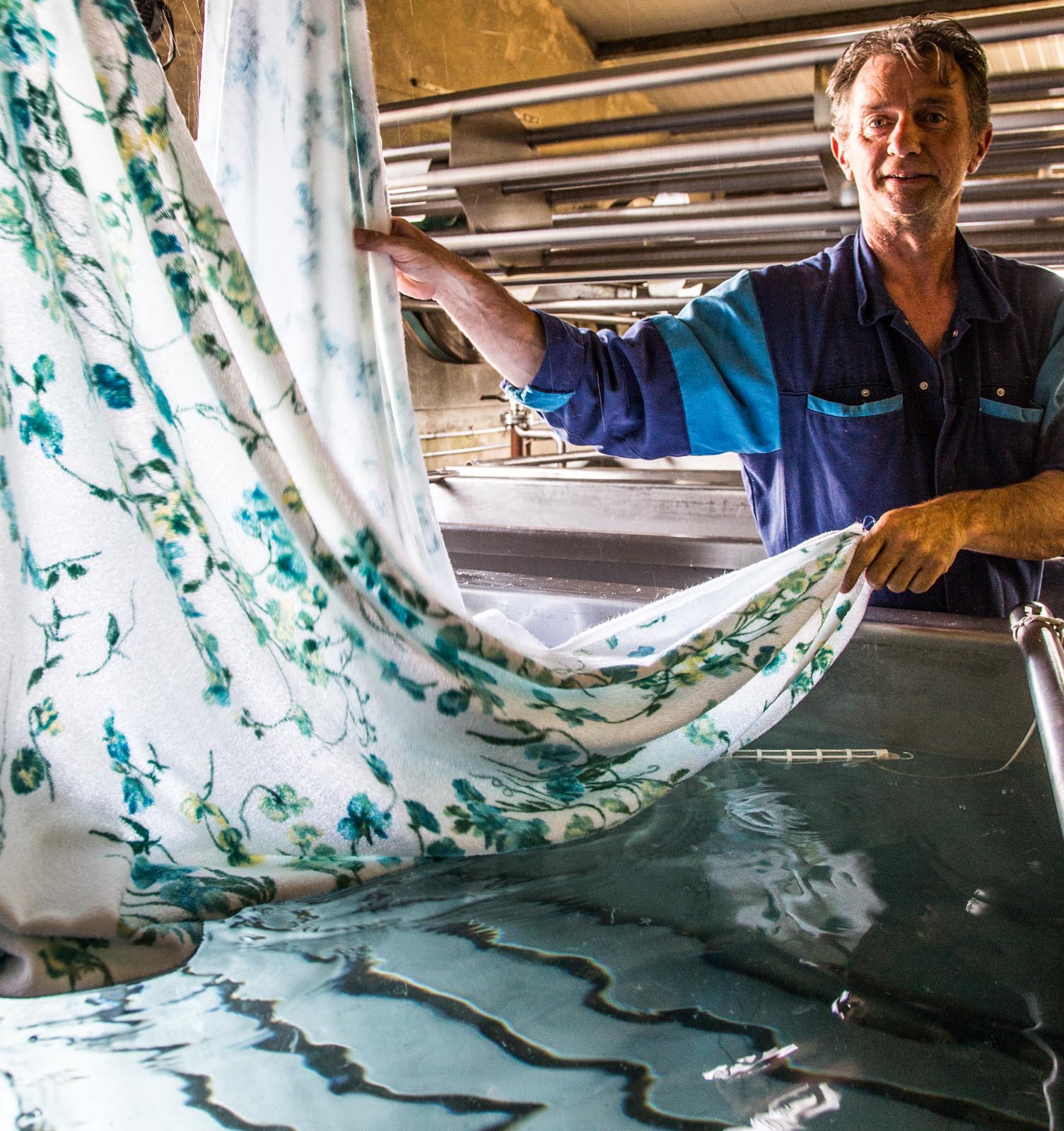
Washing the fabrics after printing, to set their colors.
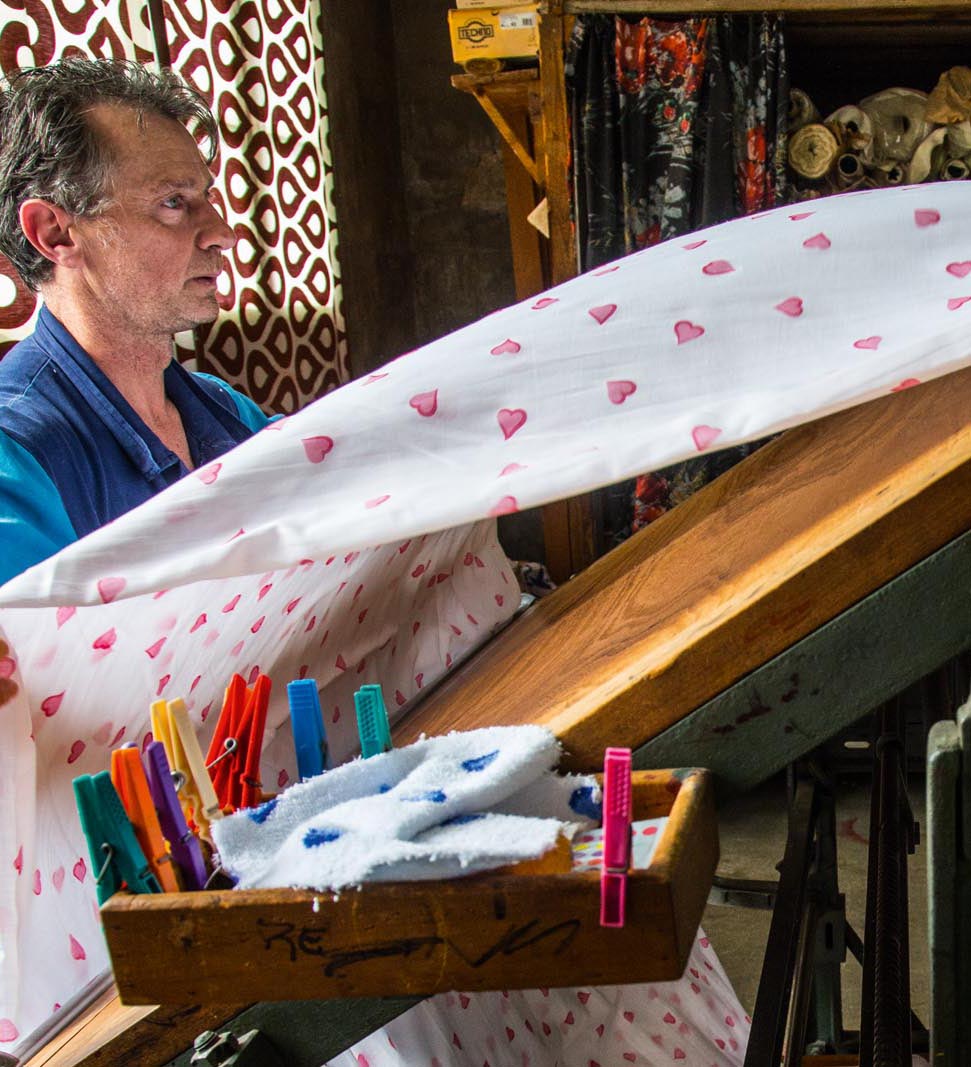
Inspecting the fabrics before rolling and sending to the factory in Cambrai to be cut and sewn.
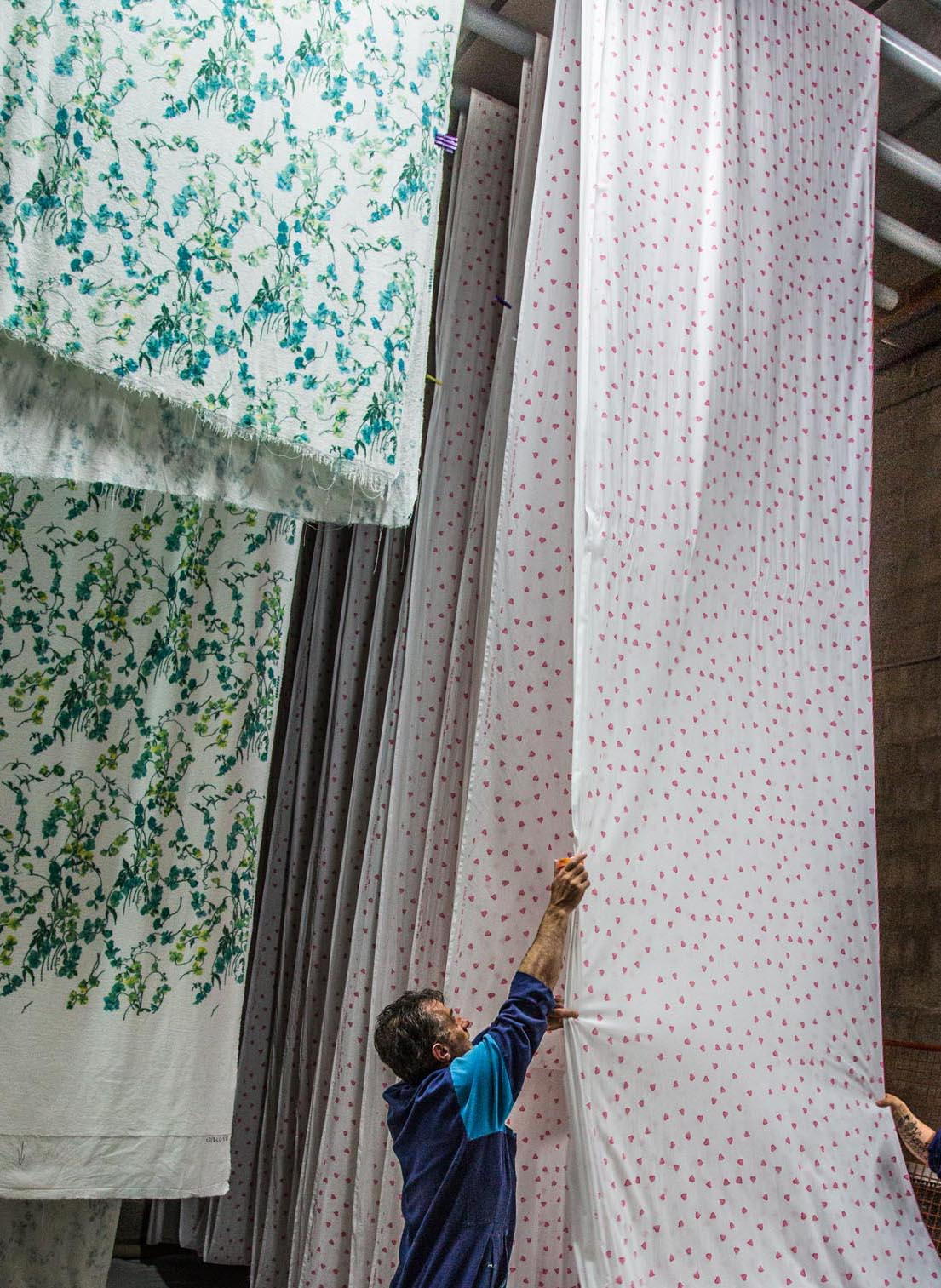
Air drying the fabrics after washing.
After printing, the fabrics are hung in the rafters to air dry for one day. Following this, the fabrics are treated with either steam (terry) or dry heat (flat fabrics like percale, voile and sateen) to ensure that the paints adhere properly. A multi-step washing process removes any excess paint and softens the fibers. Finally, after washing, the fabrics are once again hung to dry.
All printed fabrics go through a final inspection at Argentan’s quality control to check for printing or weaving flaws as well as color correctness against original samples. Only after this inspection and approval are the fabrics rolled and shipped to Cambrai to be cut and sewn into finished products.
Employees train for years to master the intricate techniques required for sewing and trimming Porthault bedding and towels. The scalloped border, a signature D. Porthault finishing, requires patience, a steady hand and years of apprenticeship. All sewing is done either by hand or by using hand-guided machines.
Carnac is the name of D. Porthault’s exclusive, elaborately embellished embroideries. Only five meters of Carnac can be created in a day. The intricate trims, designed by Porthault’s atelier, are then hand cut and applied to fabrics by a technique called incrusté, or appliqué.
Finished goods are washed, ironed and quality controlled one last time before being packaged and shipped to the D. Porthault stores.
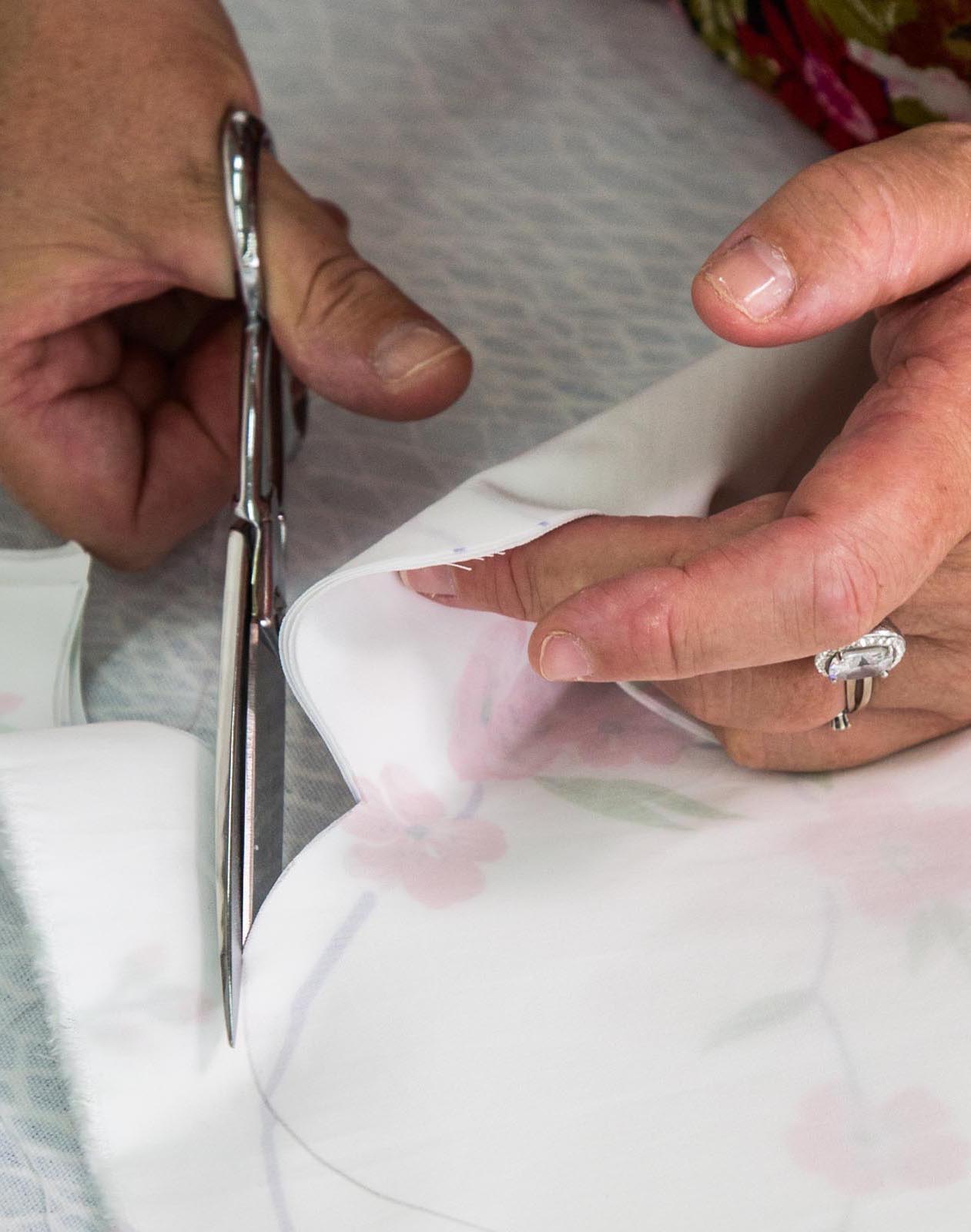
Cutting Porthault’s iconic scallop to receive its bias finishing.
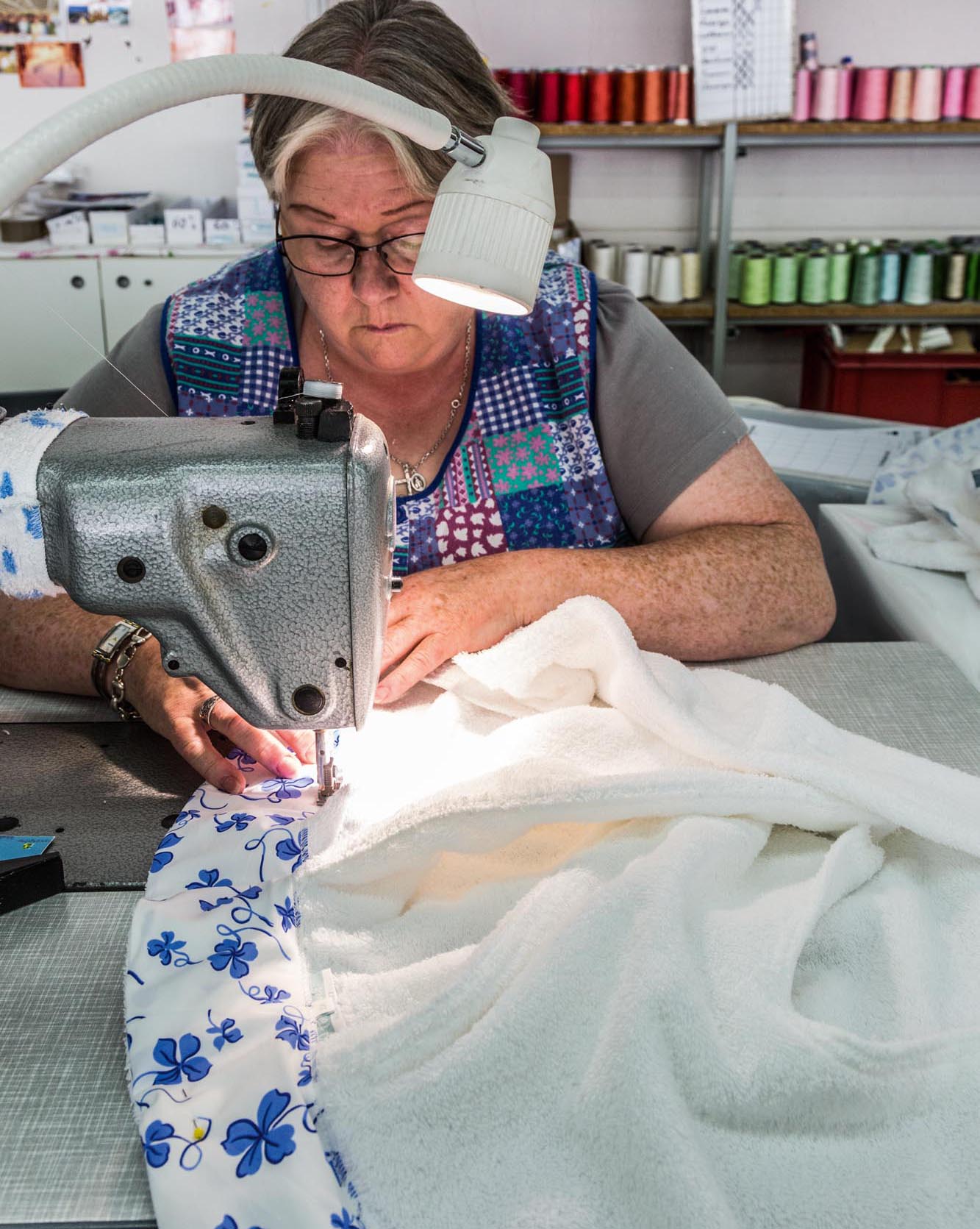
Sewing trim onto a cotton terry robe.
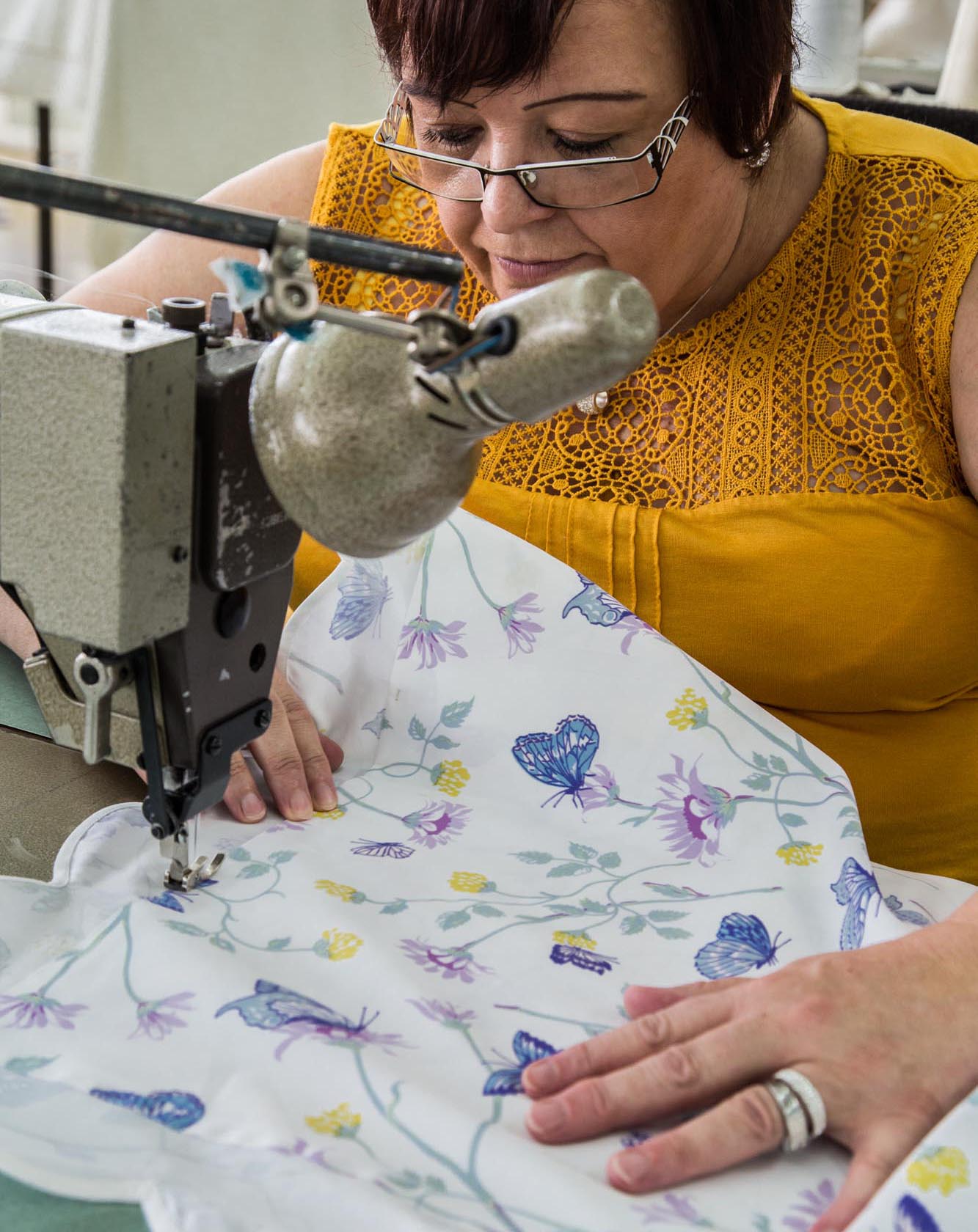
Sewing a scalloped-trimmed pillow sham.
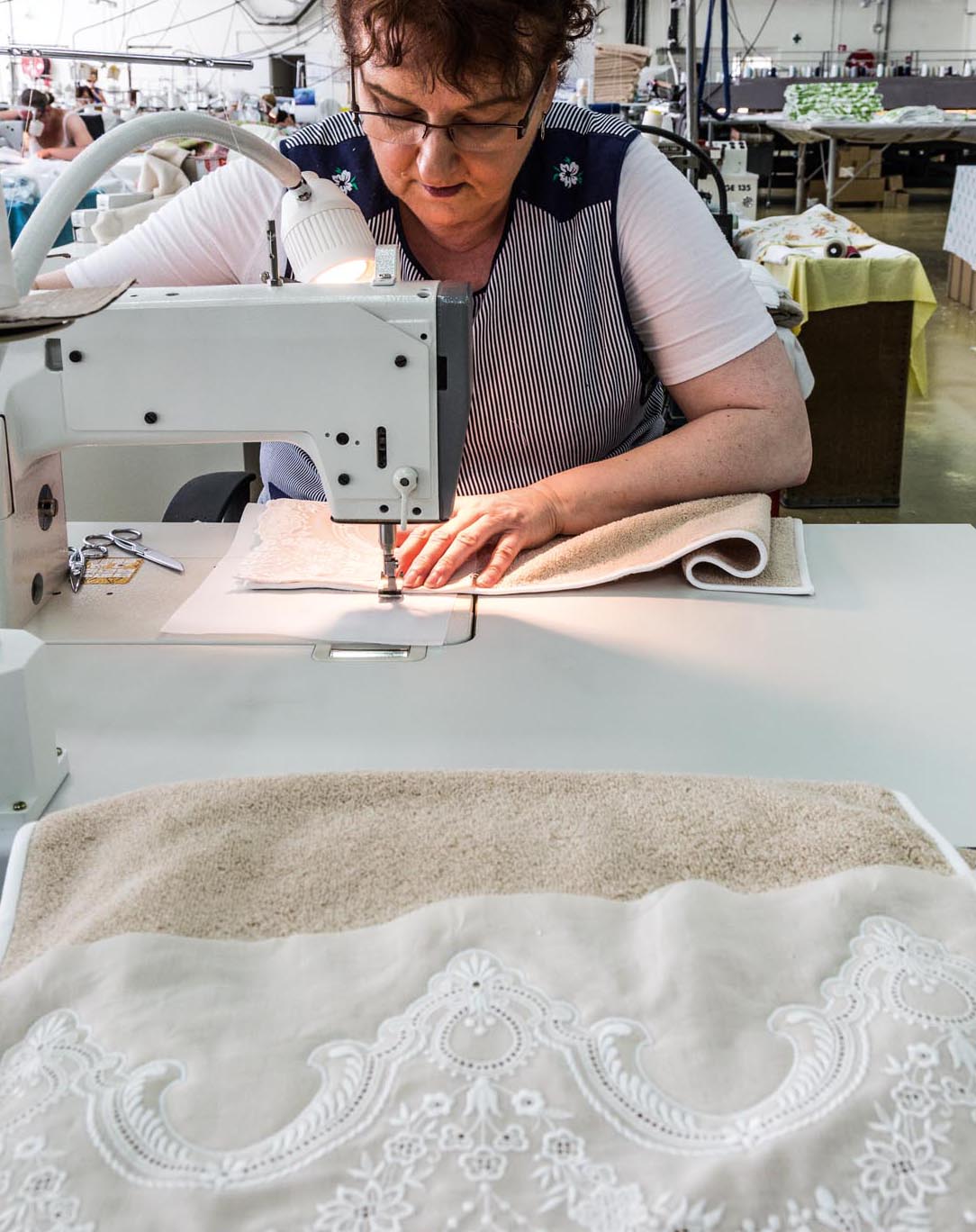
Cutting and sewing Carnac lace onto terry towels.